'Eerily quiet': How California's early action against COVID-19 delayed the surge at hospitals
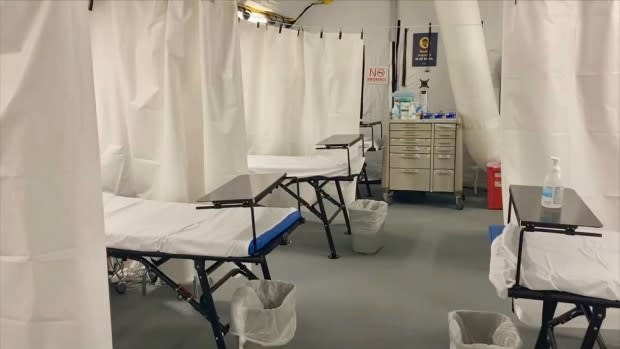
Dr. Jahan Fahimi unzips the plastic inner entrance to a mobile isolated care unit set up in a hospital parking lot. If you live in San Francisco and come down with COVID-19, this is where you might end up.
But look around the mobile unit, even the University of California San Francisco Health hospital itself, says the emergency care physician.
"It's eerily quiet in our emergency room and in the hospital," he says. "Most of us would have expected that the surge would already be here. And it hasn't yet come."
Since the pandemic began, many California hospitals have been preparing for a massive influx of COVID-19 patients — the dreaded surge. However, evidence is mounting that California's early action — including the first statewide stay-at-home order in the U.S. — may have helped slow the spread of the virus and temporarily relieve pressure on hospitals.
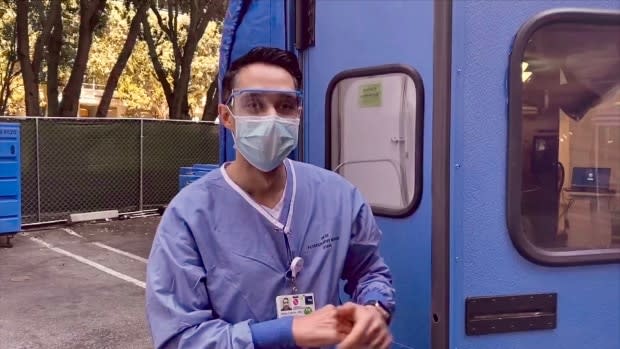
At one point, several weeks ago, about half of the patients at one San Francisco-area hospital had either tested positive for COVID-19 or were possible cases, says Dr. Stephen Parodi, an executive with the Permanente Medical Group, which oversees more than 30 California hospitals.
Since then, he says, the rate of hospitalizations has stabilized.
"We saw within about three to four days of implementing the stay-at-home orders, a levelling off."
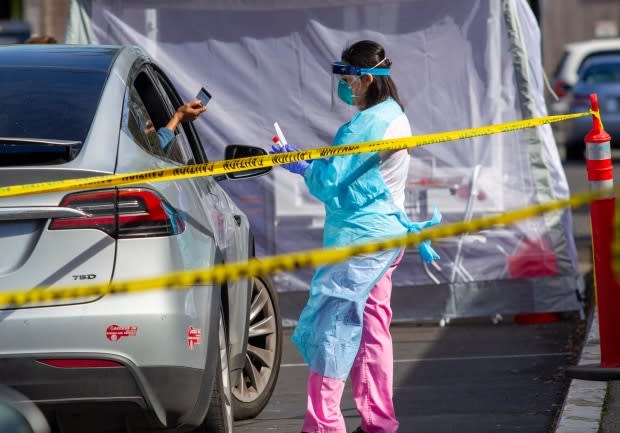
According to the COVID Tracking Project, a collaboration of volunteer scientists, journalists and engineers who track and collate COVID-19-related data, in the first week of March, the states of New York and California had about the same number of coronavirus cases. Now, New York has about eight times as many cases as California, and close to 10 times as many deaths.
While New York issued its stay-at-home order only a day after California, several California jurisdictions had already enacted their own orders several days earlier and shut their schools long before New York did.
"That's when we really started seeing a dropping and levelling off of the cases," says Parodi.
They have additionally prohibited most residential and commercial construction, closed dog parks and playgrounds and banned play with a ball except with family — rules that have been strictly enforced. Local authorities are also turning people away at many beaches, which some other states, such as Georgia, have been loath to do.
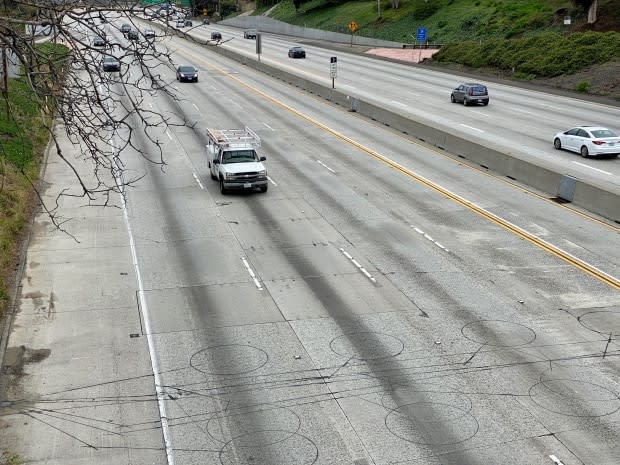
"You look outside, it looks like Christmas Day on the streets; there's nobody's walking around," says Dr. George Rutherford, a professor of epidemiology at the Berkeley School of Public Health.
And because the public has largely heeded the early injunctions, they have been more effective, he says.
"Think of it as like a paper cutter coming down on viral transmission. It's the most draconian weapon we have at our disposal in public health."
WATCH / Dr. Jahan Fahimi shows how his hospital in San Francisco is preparing for a surge of COVID-19 patients:
Last week, the Seattle-based Institute for Health Metrics and Evaluation (IHME) published a state-by-state projection of COVID-19 deaths in the U.S. over the next four months. The report suggests California's early and aggressive distancing measures are paying off.
"The data is telling us that they are working and they are effective at reducing the number of mortality and reducing the demand on our hospitals as well," says Ali Mokdad, a professor at the IHME.
The states like California and Washington that implemented physical distancing early had fewer deaths than what was projected, Mokdad says.
"We were really disappointed when many states delayed these measures."
As of Wednesday evening, governors in eight states had yet to issue statewide stay-at-home orders: Arkansas, Iowa, Oklahoma, Nebraska, North Dakota, South Dakota, Utah, and Wyoming.
Missed opportunity
Nicholas Jewell, a professor of epidemiology at the University of California, Berkeley, says many states lost an important opportunity. When measures aren't taken, the number of infections grows exponentially, so two weeks of lead time on physical distancing could reduce the number of deaths by 80 to 90 per cent, he says.
The time to enact stringent physical distancing measures is when many people think "it's too early and you're overreacting," he says.
"It's a real mistake to wait until you think, 'Well, now we have a problem. We need to start doing something about it.' You're already really too late."
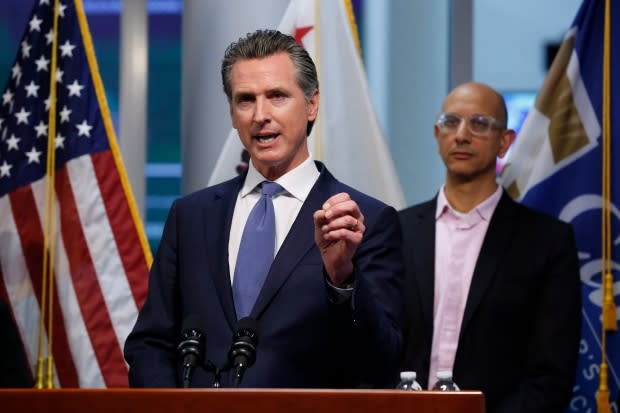
Several other factors are likely helping to slow the spread in California.
Dr. Fahimi says high-tech workers in Silicon Valley were among the first to stay at home.
"A lot of the companies were very proactive about sending their workforce home and doing work remotely even before the shelter-in-place orders were placed," Fahimi says.
As far as testing goes, after an initial lag that left California behind other states, it has now greatly ramped up its system.
Gov. Gavin Newsom created a task force that he says will boost testing fivefold by the end of the month. And Los Angeles Mayor Eric Garcetti announced Monday evening that any L.A. County resident who has symptoms can get tested by applying online.
Experts say testing is key to understanding infection patterns, which makes it easier to slow the virus's spread.
On Tuesday, Garcetti also mandated that all customers and employees in essential businesses that are allowed to remain open must wear face coverings.
The worst is still to come
The state is now so well stocked with equipment it is sending 500 of its ventilators to other states that need them more urgently.
The flattening of the curve has bought the state a resource more valuable than masks or ventilators: time.
"So that when the surge actually does come, we are much better prepared than we would have been otherwise," Fahimi says.
There's plenty of cause for optimism, but each of the experts who spoke with CBC News had a different way of issuing the same warning: the worst is still to come.
"We don't know how big the surge will be," Fahimi says. "We just know that one is going to come."
Prisons, health-care facilities, large populations of homeless people, they're all "dry tinder lying around," says Rutherford. "And if you get a spark on it, they will ignite."
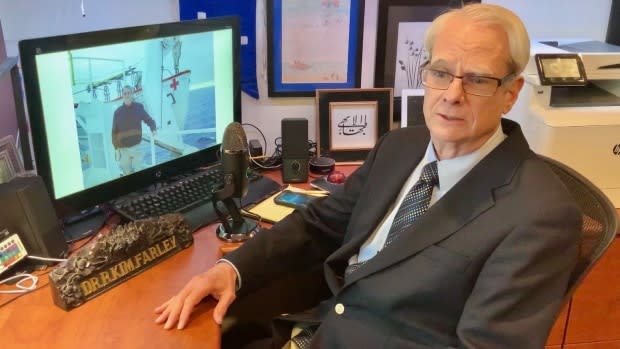
Dr. Robert Kim-Farley is an epidemiology professor at UCLA, as well as a former official with the U.S. Centers for Disease Control. He cautions against premature optimism. He says there are asterisks when comparing the current situation in California's biggest cities and the nightmare unfolding in New York.
For example, he says, compared to New York City, Los Angeles County is a much less dense metropolitan area. And in this case, L.A.'s oft-criticized urban sprawl and dependence on getting around in cars rather than public transit may have helped with physical distancing, he says.
Kim-Farley also acknowledges that California's early scramble for medical and protective equipment was at least partially due to decisions made years ago.
The budget for building and maintaining stockpiles was slashed by the state's former governor during the last recession. The materials, he says, were either sold off or given away because they couldn't be maintained.
Kim-Farley says he hopes this experience has taught the state a lesson.
"That just because we're going to have financial difficulties doesn't mean that we shouldn't be paying what's necessary for an insurance policy of having strong, robust stockpiles just for these types of things, when we have a pandemic."
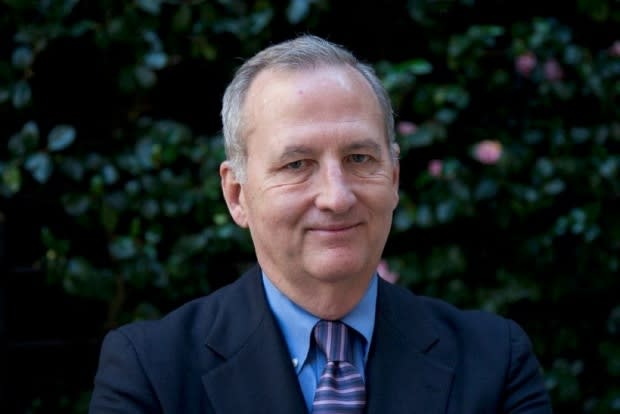
Rutherford, a former medical resident at Toronto's Hospital for Sick Children, says it's vital that experts, policymakers and the public understand what happened during the outbreak and what was effective in dealing with it.
Society must watch and learn, and, hopefully, remember, he says, "for when the next epidemic comes along 100 years from now."

